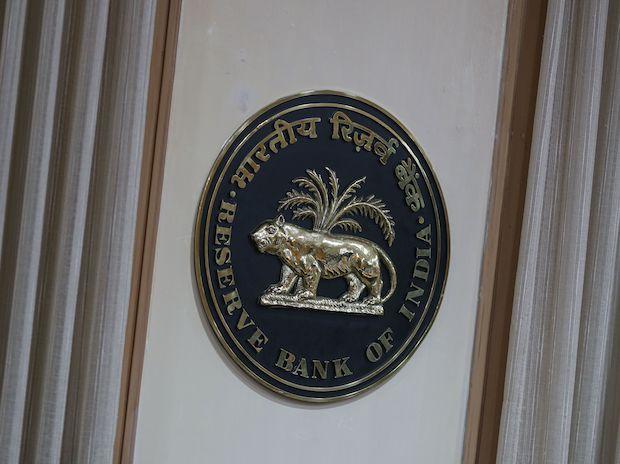[ad_1]
The Reserve Bank of India’s (RBI) Monetary Policy Committee (MPC) on Wednesday continued with the repo rate hike, raising it 35 basis points (bps) to 6.25 per cent. In 2022, the repo rate was raised 225 bps from 4 per cent in April to 6.25 per cent in December.
The central bank’s MPC cut down the Gross Domestic Product (GDP) growth projection for FY23 from 7 per cent in the previous announcement to 6.8 per cent.
“Even after this revision in our growth projection for 2022-23, India will still be among the fastest growing major economies in the world,” RBI Governor Shaktikanta Das said in his speech.
The RBI kept the retail inflation forecast for FY23 unchanged at 6.7 per cent. However, the forecast for Q3FY23 and Q4FY23 has been raised from 6.5 per cent and 5.8 per cent to 6.6 per cent and 5.9 per cent, respectively. Das said that for the next 12 months, the inflation would stay above 4 per cent.
“The main risk is that core inflation remains sticky and elevated. Overall, the CPI price momentum remains high…headline inflation is projected at 6.7 per cent in 2022-23, with Q3 at 6.6 per cent and Q4 at 5.9 per cent. The risks are evenly balanced. CPI inflation for Q1:2023-24 is projected at 5.0 per cent and for Q2 at 5.4 per cent, on the assumption of a normal monsoon,” he added.
Change in RBI MPC’s stance on Inflation and GDP growth in 2022
The December MPC announcement was the last such announcement in 2022. Throughout the year, the commentary around GDP growth forecast and inflation has changed in 2022.
February 10
The war in Ukraine had not broken out when the MPC announcement was made in February. The repo rate was kept unchanged at 4 per cent. The real GDP growth for FY23 was projected at 7.8 per cent. The CPI inflation for the year was projected at 4.5 per cent.
“Overall, taking into consideration the outlook for inflation and growth, in particular the comfort provided by the improving inflation outlook, the uncertainties related to Omicron and global spillovers, the MPC was of the view that continued policy support is warranted for a durable and broad-based recovery,” Das said.
April 8
The war in Ukraine started in the last week of February. However, the RBI decided to keep the repo rate at 4 per cent. The GDP growth forecast was reduced to 7.2 per cent in FY23. The inflation forecast was hiked to 5.7 per cent. The average crude oil price was taken as $100 per barrel.
May 4
Due to high inflationary pressures on the back of the war in Ukraine, the RBI held an off-cycle meeting in May and decided to raise the repo rate by 40 bps to 4.4 per cent. In March, the retail inflation was 7 per cent.
“…the strengthening of inflationary impulses in sync with the persistence of adverse global price shocks poses upward risks to the inflation trajectory presented in the April MPC resolution,” Das said.
June 8
In April, the retail inflation was recorded at 7.79 per cent. In May, it was still above 7 per cent at 7.04 per cent. In June, RBI announced a further repo rate hike by 50 basis points to 4.9 per cent.
The GDP growth forecast was retained at 7.2 per cent. The average crude oil price assumption was changed to $105 per barrel, and the inflation forecast for FY23 was also raised to 6.7 per cent. This was considerably higher than the 5.7 per cent announced in April.
“With no resolution of the war in sight and the upside risks to inflation, prudent monetary policy measures would ensure that the second-round effects of supply-side shocks on the economy are contained and long-term inflation expectations remain firmly anchored and inflation gradually aligns close to the target,” Das said during the announcement.
August 5
The inflation fell below 7 per cent in July. However, core inflation continued to remain high. RBI continued with the rate hike and upped the repo rate by 50 bps to 5.4 per cent. It, however, said that it would focus on the “withdrawal of accommodation” to control inflation.
The GDP and inflation forecast for FY23 were retained at 7.2 per cent and 6.7 per cent, respectively.
September 30
After a brief respite, inflation went back to 7 per cent in August. RBI again raised the repo rate by 50 bps to 5.9 per cent and said it would remain “focused on the withdrawal of accommodation”.
The GDP growth forecast was slashed to 7 per cent. The inflation forecast was retained at 6.7 per cent. However, the average crude oil price assumption was cut to $100 per barrel.
December 7
Thirty-five bps have further hiked the repo rate to 6.25 per cent. The inflation forecast has been retained at 6.7 per cent, but the GDP growth forecast has been further lowered to 6.8 per cent.
“GDP growth in India remains resilient and inflation is expected to moderate, but the battle against inflation is not over. Pressure points from high and sticky core inflation and exposure of food inflation to international factors and weather-related events do remain,” Das said.
[ad_2]
Source link



